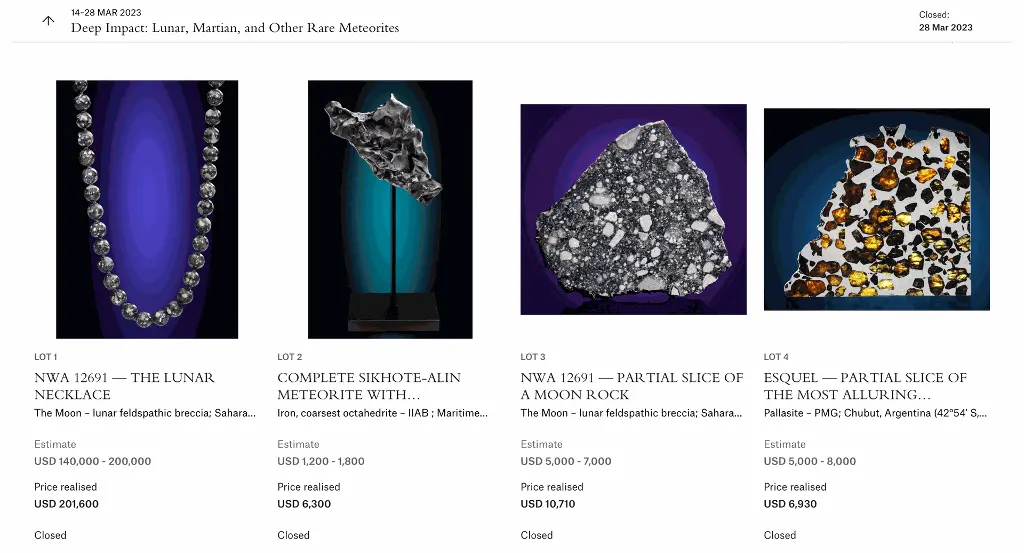Potential Return:
Associated risk: High.
Investment Horizon: 3 years.
Summar
What I Like About This Investment:
- It's a new string to my bow, with an unprecedented category of assets that enriches my knowledge of alternative investment.
- An investment accessible from €250, ideal for getting familiar with this type of asset while limiting risks.
- The passive dimension of investment: all steps, from acquisition to management, are fully handled by Konvi and its specialized partner.
What I Don’t Like:
- The start-up profile of the Konvi platform, which despite signs of good management, remains a young company and therefore potentially fragile.
- Relatively high fees, although justified by the potential for high returns and the complexity of managing a physical asset.
Context
After a first investment in Konvi in a Eocene fossil, I wanted to extend the experience. Although the first operation is not yet complete, my complete analysis of the platform gave me confidence in this player, and I feel ready to invest a budget of €250 each month.
I consider this as a pleasure investment, in alternative assets that attract me and of which I am happy to become a co-owner. Although I allow myself to invest this amount monthly, I do not do it systematically. I wait for one of these collectibles to truly excite me before taking action. C’est en cela que c’est différent d’un DCA (Dollar Cost Averaging), a strategy that I strive to follow in the stock market, for example.
How to invest in a meteorite?
Although it may seem surprising to you, it is entirely possible to invest in a meteorite. They are actually highly sought-after objects that are traded in an already well-established market. Whether it is during auction,in mineral fairs, on specialized websites, or through transactions between individuals, collectors, or private companies, these exchanges occur daily.
The real question is not so much how to invest in a meteorite, but rather how to make it a profitable investment. For that, there is no secret: it requires a deep understanding of the market or surrounding yourself with enthusiasts who can advise you wisely. I will therefore introduce you to a platform that will serve as an intermediary between you and their partners specialized in meteorites and fossils.
Presentation of Konvi
Konvi is an Irish platform, founded in 2020 by Eran Peer and Loana Surdu-Bob, specializing in co-investment in collectibles. Its model allows small investors to access assets that were once reserved for the wealthy, such as watches, vintage cars, wines and spirits, and even highly sought-after items like Birkin bags.

When a specialized partner identifies an asset with potential for appreciation, an offer is published to raise funds from investors. If the funding goal is met, the asset is purchased, and the participants become co-owners. The asset is then held by the partner and resold before the end of the appreciation period, with profits redistributed to the investors.
My ultra-detailed analysis of Konvi
Presentation of the specialized partner Fossil Realm
You will have understood, Fossil Realm is one of the key partners of Konvi. This Canadian company is responsible for the research, negotiation, purchase, storage, insurance, and resale of fossils, meteorites, and other unique pieces for the investors on the platform.
If I chose to invest for the second time in an offering from this company based in Ottawa, it is because my analysis has returned numerous positive signals. With expertise shaped over several generations, Fossil Realm has established itself as an undisputed leader in this niche market. It is particularly famous for having sold the largest Triceratops fossil, named "Willard," as well as a Jurassic-era crocodile, for an amount exceeding €250,000.
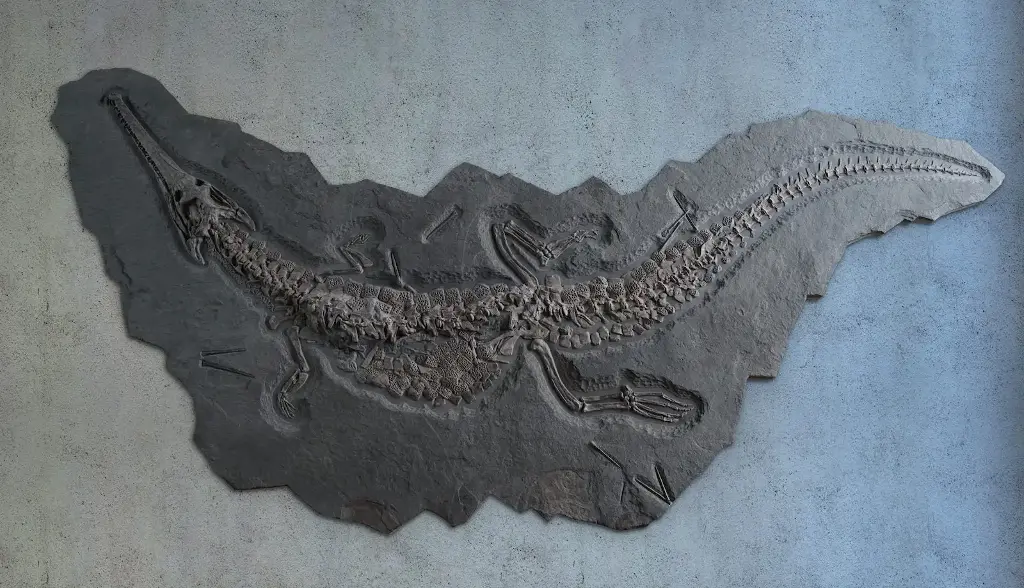
Fossil Realm is primarily a family adventure driven by a shared passion: natural sciences. The story begins in 1984 with Jim Lovisek and Liz Komisar, who founded the Toronto Nature Centre, a scientific camp that quickly evolved to include a fossil and mineral shop. Their son, Peter Lovisek, writes a new chapter by founding Fossil Realm at the age of 17, with the support of his parents. Throughout these years, this family has dedicated their lives to these natural specimens, helping museums and private collectors enrich their collections with exceptional pieces.
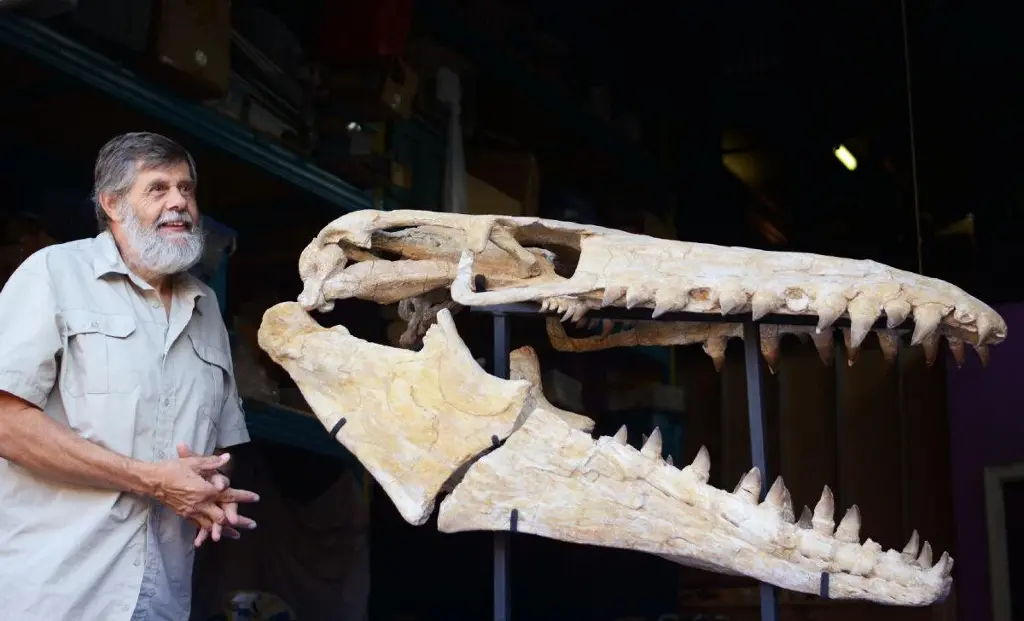
Photo by Nick Iwanyshyn - York Region Media Group
Operation Overview
To invest on Konvi, each operation goes through 6 steps:
- Pre-order: First, you are notified by email and on the community forum about the upcoming release of a new offer. At that time, you have the option to place a pre-order, which allows you to benefit from a €10 discount when the offer is open for investment.
- Publication: Once the offer is launched, you have 5 days to finalize your pre-order and proceed with the payment.
- Identity verification: If your account has not yet been approved, Konvi will perform an identity verification after your order is confirmed. This procedure is mandated by the Central Bank of Ireland to combat money laundering.
- Contract signing: Once your identity is validated, you sign a purchase contract that formalizes your co-ownership of the asset.
- Acquisition: When the fundraising goal is reached and all payments have been received, the partner is responsible for finding an opportunity that offers the best potential return on investment.
- Presentation: Photos of the specimen purchased by the partner are being sent to you, along with a detailed presentation of the item of which you are now a co-owner.
Which Meteorite Did I Invest In?
If my first investment in the fossil of a palm frond did not evoke strong emotions in me, this one has something special.
Meteorites come in very varied shapes and appearances, often far from what one imagines when thinking of a meteorite. However, the one I acquired perfectly matches the image we have of a meteorite. With its striations formed by the speed and intense heat experienced by the stone, it almost becomes a cliché. One can easily visualize what it must have looked like at the moment of its passage through the Earth's atmosphere.
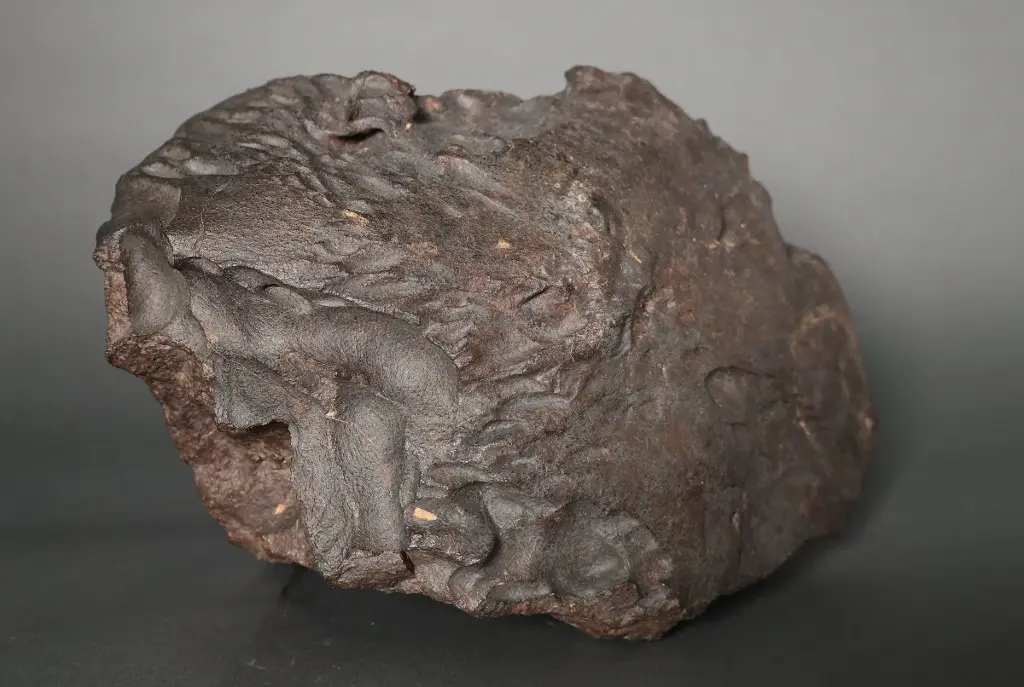
The Meteorite in Detail
Discovered in 2023 in the south of Algeria, this 24.7 kg meteorite is classified as an oriented chondrite (H4-6) in the shape of a shield. This feature, related to its orientation, makes it a very rare specimen, observable in less than one meteorite out of 1000. This means that the rock maintained a stable position while crossing the Earth's atmosphere at over 40,000 km/h.
In just a few seconds, the front face heated up to an extreme temperature of about 1538 °C, causing its surface to melt and forming a spectacular thermal shield capable of reflecting atmospheric heat.
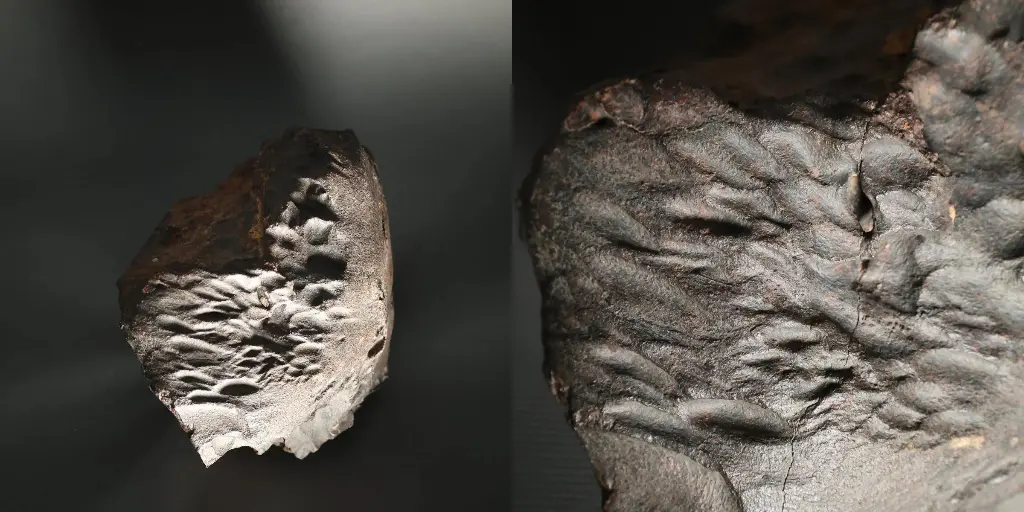
This convection phenomenon generated striations and grooves formed by the molten rock. These delicate lines solidified at the moment the meteorite suddenly slowed down, reaching a terminal velocity of about 300 km/h.
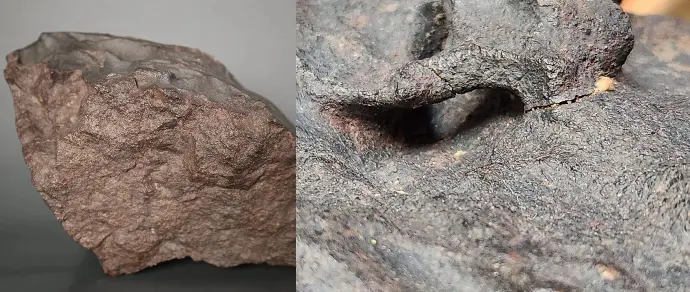
On the Fossil Realm website, it says: "Intact oriented meteorites are already extremely rare, but finding one of this size, with an intact fusion crust and well-preserved flight marks, is a unique event, worthy of a museum. Such a specimen appears only once every century."
Konvi and his partner estimate the price of this meteorite at $250,000. In 2021, another very similar meteorite was sold at an auction at Christie’s for $175,000, while its price was estimated between $50,000 and $80,000.
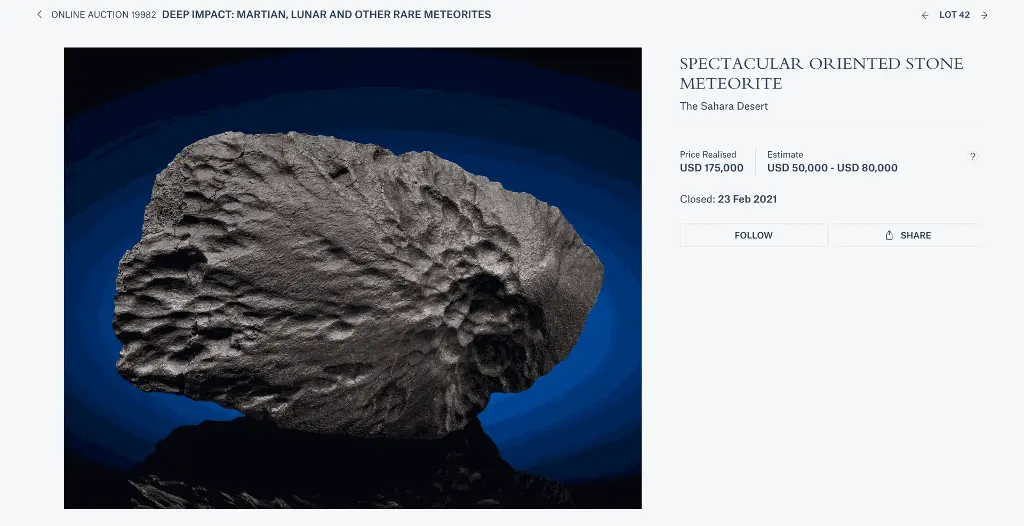
Performance Achieved
My performance
This section will be updated as soon as the meteorite has been resold.
What performance to expect?
It is difficult to quantify the performance of this category of investment, particularly because this market is just beginning to develop. We do not have a historical record or sufficient data to trace the evolution of meteorite prices over time. This task is all the more challenging because each of these specimens is unique.
“What determines the value of a meteorite is its quality, its mass, its freshness, its history, its rarity, its possible classification by a mineralogy institute [...] and then its publication in the Meteoritical Bulletin, which is authoritative” -Brigitte Zanda, meteoritician, astrophysicist, and cosmochemist.
However, if you wish to purchase one physically, it is likely that the price will be expressed per gram. Prices can vary significantly, ranging from €1 per gram for ordinary chondrites to €10,000 per gram for lunar meteorites.
It is clear that there is demand, and auctions in this field are regular. Every year, the auction house Christie's showcases these specimens during a sale titled "Deep Impact: Lunar, Martian, and Other Rare Meteorites." In 2023, during this annual sale, 68 lots were sold for a total of $906,192. Some of them were sold for nearly four times their high estimate.
On the Fossil Realm side, the company estimates the appreciation of its assets at 35% per year. In the past, it has made some very successful transactions, such as the purchase of a Jurassic crocodile for €163,700, which was resold three years later for €263,981, resulting in a capital gain of 61.26%.
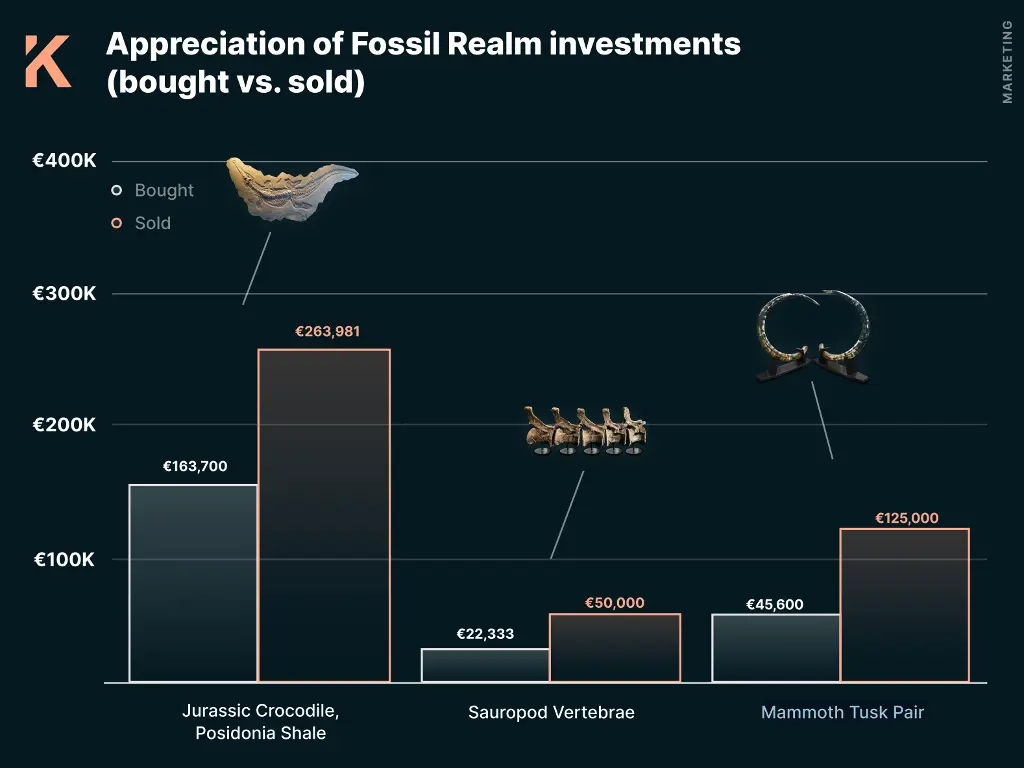
What are the risks?
It is always good to remind that any investment carries risks of capital loss, and this is especially true when it comes to alternative assets as exotic as this one.
As you might suspect, the demand, and therefore the price of these items, can either increase or decrease. It is also not guaranteed that the partner will find a buyer before the end of the scheduled appreciation period. Furthermore, since Konvi is a start-up, this adds an additional risk that is not related to the asset you have invested in, but to the platform, which acts as an intermediary.
Konvi has implemented several measures to mitigate these risks. First, the assets are held under a trust agreement by Classic Valuable Assets CLG, a licensed fiduciary and corporate service provider in the Republic of Ireland. This allows investors to benefit from enhanced protection through fractional ownership of the assets. This means that even if Konvi were to disappear, Classic Valuable Assets CLG would be there to certify that you own a share of the asset.
The platform also pays special attention to the selection of its partners, prioritizing the most successful companies in their sector. This choice is reflected in the analysis of these companies: they have years of solid experience, remarkable performance histories, as well as passionate and influential founders in their market.
Fees and taxation
Fees applied by Konvi
Investing in a meteorite through the Konvi platform involves several types of fees, both direct and indirect, applied at different stages of the operation. However, if you do not carefully review the information document related to this asset, you will have no clear idea of the actual costs you are paying for this service, as most of these fees are already included in the amount of your investment.
Fixed Costs
- 10% Konvi commission included:
- 10% of 250 € = 25 €
- This margin covers the costs related to payment transfers, legal procedures, identity verification (KYC), anti-money laundering (AML), as well as investor management.
- Currency exchange fee of 0.9% previously included in the price:
- 0.9% of 250 € = 2.25 €
- These fees include the costs associated with money transfers.
- Storage fee of 6.13% included in the price:
- 6.13% of 250 € = 15.33 €
- These fees are related to the preservation during the appraisal period and until the sale.
- Management fees of 1.5% per year included:
- 1.5% of €250 per year = €3.75 x 3 years = €11.25
- These annual fees are used for management, audits, legal fees, and recurring taxes related to the asset.
Variable costs
5. Performance fees in case of profit:
- If the asset achieves an annual appreciation of 20% or less, Konvi will take a commission of 6.15% on the profit made.
- If the asset achieves an annual appreciation of more than 20%, Konvi will take an additional commission of 27.41%, only on the portion of profit exceeding 20% annual appreciation.
These fees, although they reduce potential gains, are proportional to the sometimes outrageous returns that can be found in these very exotic investment categories.
Meteorite Taxation
Work in progress.

